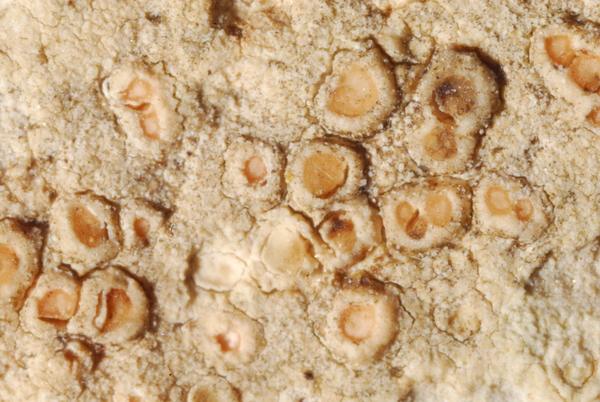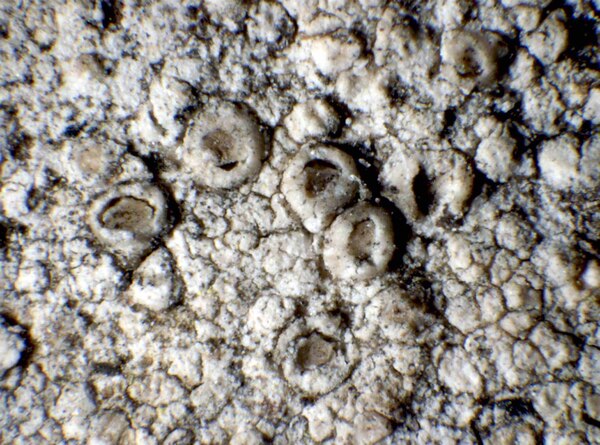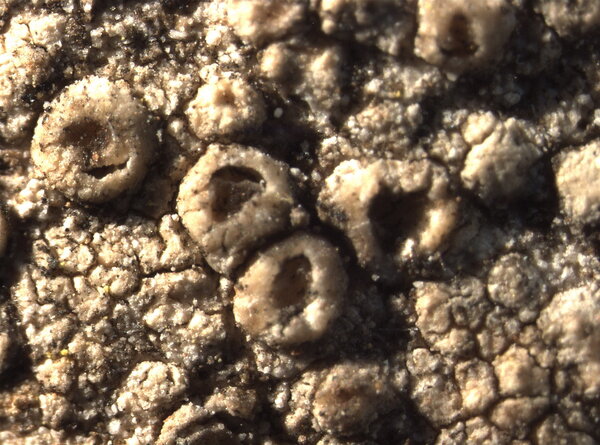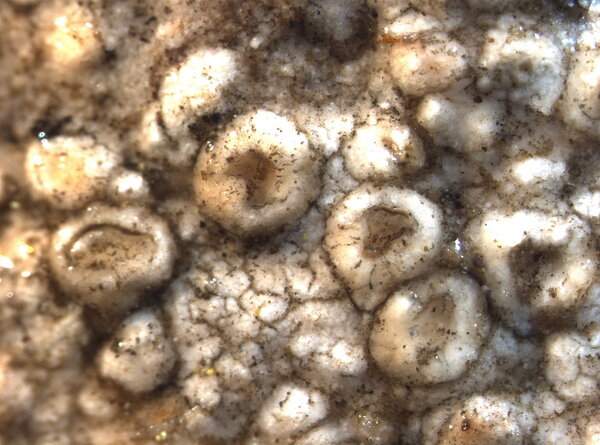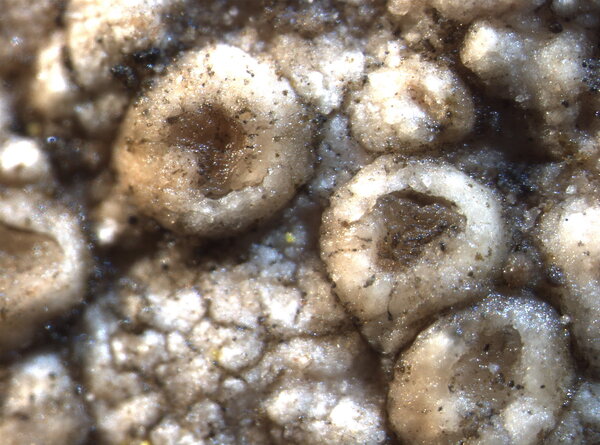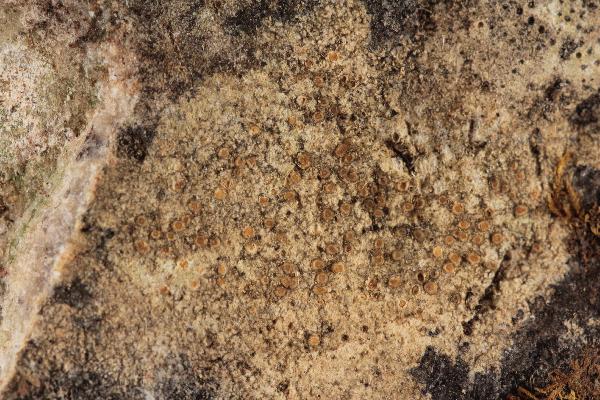Hymenelia similis (A. Massal.) M. Choisy
Bull. Mens. Soc. Linn. Lyon, 20: 133, 1951. Basionym: Pinacisca similis A. Massal. - Neagen. Lich.: 5, 1854.
Synonyms: Aspicilia isabellina De Not. ex Jatta; Aspicilia similis (A. Massal.) Anzi; Ionaspis similis (A. Massal.) Jatta; Lecanora carneopallens Nyl.; Lecanora similis (A. Massal.) Nyl.
Distribution: N - Ven (Lazzarin 2000b), TAA (Nascimbene & al. 2022), Lomb, Piem (Isocrono & al. 2004), Emil (Fariselli & al. 2020), Lig. C - Tosc, Sar. S - Camp (Garofalo & al. 1999), Si (Nimis & al. 1994).
Description: Thallus crustose, endosubstratic to thinly episubstratic, continuous or finely rimose- areolate, whitish, pale grey or pale yellow. Apothecia circular in outline, 0.3-1(-1.2) mm across, at first immersed, then clearly sessile, with a flat, whitish to pinkish grey disc, and a thick, raised, smooth, usually persistent, rarely finally indistinct margin. Proper exciple colourless; epithecium pale yellow to orange-yellow, N-; hymenium colourless, 140-180 µm high; paraphyses coherent, branched and anastomosing, submoniliform in upper part, the apical cells slightly swollen; hypothecium colourless. Asci 8-spored, cylindrical-clavate, the outer wall K/I+ blue, but the inner walls and apical dome K/I-. Ascospores 1-celled, hyaline, broadly ellipsoid, 14-25(-28) x 15-18(-20) µm. Photobiont chlorococcoid (Asterochloris), the cells <15 µm wide. Spot tests: thallus K-, C-, KC-, P-, UV-. Chemistry: without lichen substances.Note: on shaded and steeply inclined surfaces of calciferous rocks, especially limestone and dolomite, descending to low altitudes in humid, coastal areas; probably more frequent in Southern Italy than the few records would suggest.
Growth form: Crustose endolithic
Substrata: rocks
Photobiont: green algae other than Trentepohlia
Reproductive strategy: mainly sexual
Commonnes-rarity: (info)
Alpine belt: absent
Subalpine belt: very rare
Oromediterranean belt: very rare
Montane belt: rare
Submediterranean belt: absent
Padanian area: absent
Humid submediterranean belt: very rare
Humid mediterranean belt: very rare
Dry mediterranean belt: absent
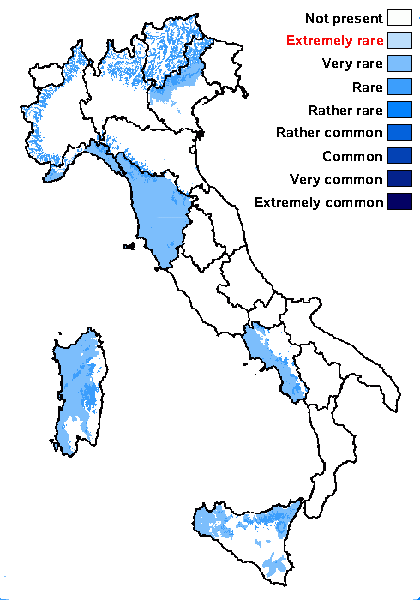
Predictive model
Herbarium samples
Growth form: Crustose endolithic
Substrata: rocks
Photobiont: green algae other than Trentepohlia
Reproductive strategy: mainly sexual
Commonnes-rarity: (info)
Alpine belt: absent
Subalpine belt: very rare
Oromediterranean belt: very rare
Montane belt: rare
Submediterranean belt: absent
Padanian area: absent
Humid submediterranean belt: very rare
Humid mediterranean belt: very rare
Dry mediterranean belt: absent

Predictive model
| Herbarium samples |
 INDEX FUNGORUM
INDEX FUNGORUM
 GBIF
GBIF
 DOLICHENS
DOLICHENS
